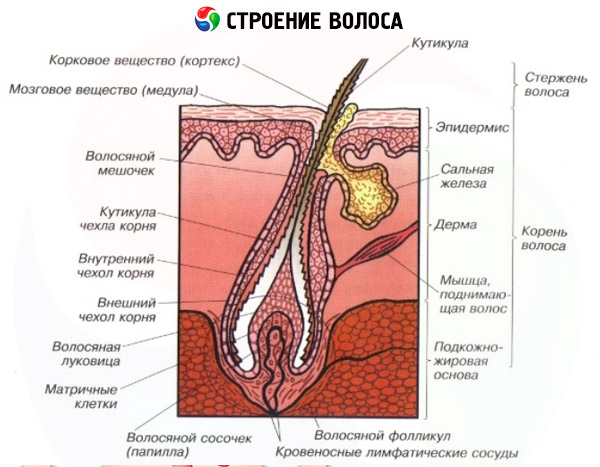Medical expert of the article
New publications
Hair structure
Last reviewed: 07.07.2025

All iLive content is medically reviewed or fact checked to ensure as much factual accuracy as possible.
We have strict sourcing guidelines and only link to reputable media sites, academic research institutions and, whenever possible, medically peer reviewed studies. Note that the numbers in parentheses ([1], [2], etc.) are clickable links to these studies.
If you feel that any of our content is inaccurate, out-of-date, or otherwise questionable, please select it and press Ctrl + Enter.
Hair (pili) covers the entire skin to varying degrees (except for the palms, soles, transitional part of the lips, glans penis, inner surface of the foreskin, labia minora). Hair, like nails, is a derivative of the epidermis. It has a shaft protruding above the surface of the skin, and a root. The root is located in the thickness of the skin, ending in an expansion - the hair bulb (bulbus pili) - the sprouting part of the hair.
The root (radix) of the hair is located in a connective tissue bag into which the sebaceous gland opens. The muscle that raises the hair (m. errector pili) is woven into this hair bag. This muscle begins in the deep layers of the reticular layer of the dermis. When the muscle contracts, the hair straightens, the sebaceous gland is compressed and secretes its secretion. The fetus's body is covered with fluff, which after birth is replaced by secondary hair.

Long (bristly) hair grows on the head, eyebrows, and eyelid margins. During puberty, hair appears in the armpits and pubis. Men grow a beard and moustache. Hair color depends on the presence of pigment. When air bubbles appear in the hair and the pigment disappears, the hair turns gray.
 [ 1 ]
[ 1 ]
What's bothering you?
What do need to examine?
How to examine?

